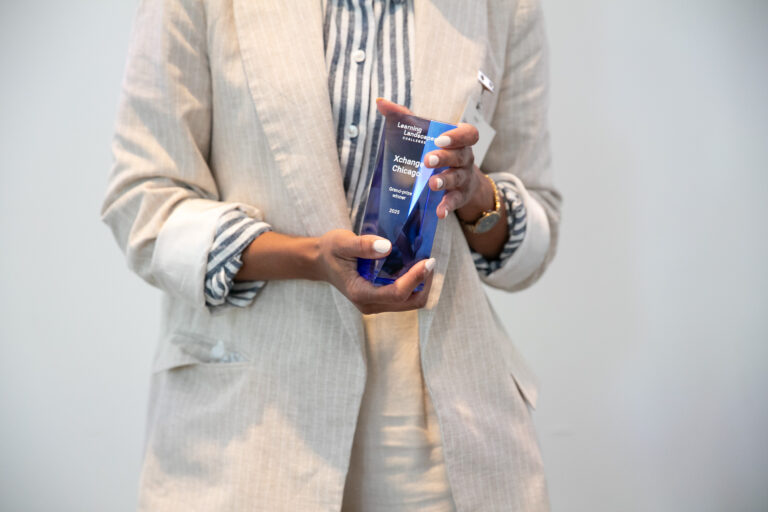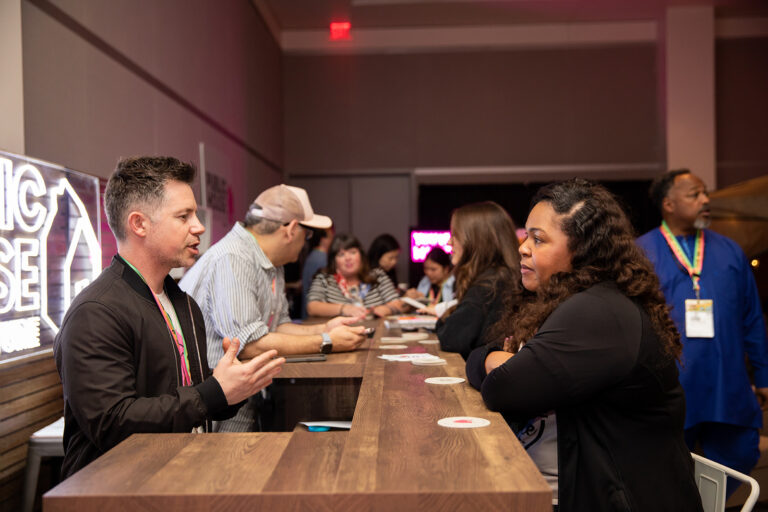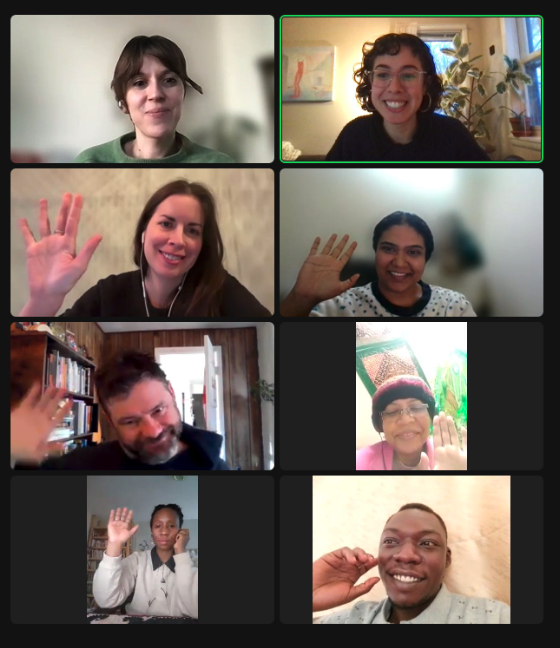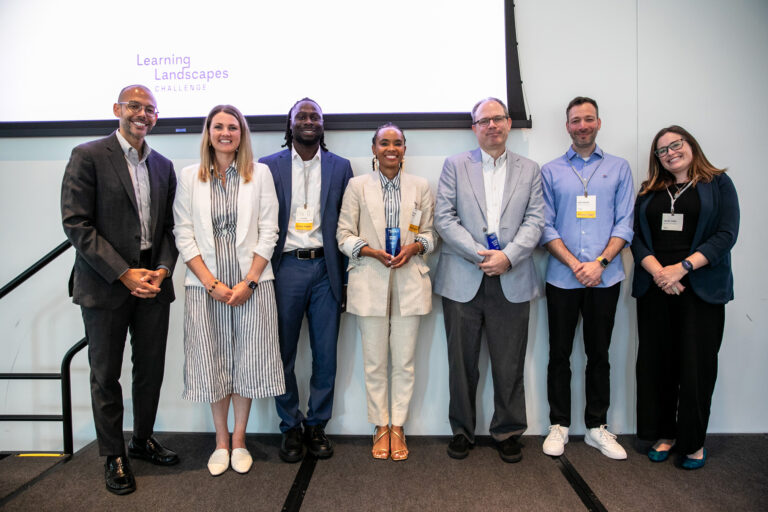Context
As part of our effective grantmaking strategy and knowledge and impact work, Siegel collects and engages with feedback from its grantees and partners. During 2024, we commissioned an independent author to conduct confidential interviews with seven grantee and partner organizations, representing a range of organizational sizes, focuses, and ages, complemented by a non-anonymous end-of-year survey conducted by our in-house Knowledge and Impact team. The qualitative research aimed to gather insights on effective philanthropy, ideal funder-grantee relationships, and how Siegel’s approach could be improved, with interviewees providing feedback on their working relationship with Siegel. See our methodology for full details.
We use these findings to improve our processes and approaches in the future, and to share our learnings on what makes philanthropy more effective with the field. While not an explicit goal of the project, the interviews also served as a means for strengthening Siegel’s relationship with grantee organizations by providing a platform for them to be heard and share valuable feedback.
The most important and often underlooked step in the feedback process is “closing the loop,” that is acting on what we can change, acknowledging what we cannot, and maintaining open, ongoing communication with the people we seek to serve. This post details how we will respond to what we heard.
Finding 1: Systems change happens very slowly. Funders can maximize their impact by taking a long view.
All of the grantees and partners interviewed for this project stressed the importance of funders taking the long view when investing in organizations committed to systems change or engaged in fields where change happens very slowly. In addition, interviewees urged funders to consider the entire ecosystem within a space, and found it helpful when funders worked with nonprofits to set both short- and long-term impact goals that could be revised as circumstances changed.
Interviewees described different ways that funders could help position grantees for long-term impact. These approaches ranged from the practical (e.g., how to structure funding packages, introductions to organizations and funders working for systems change in similar areas) to the philosophical (e.g., investing in critical infrastructure to allow for more equitable access of funding, removing hierarchies in the funder/grantee relationship by investigating questions rather than settling on a set of programs).
This was particularly true in sectors or roles where change occurred slowly. For example, interviewees who worked in K-12 education expressed frustration that many foundations made single year commitments to address challenges that would optimistically take decades to address. For their part, interviewees who worked in the technology sector explained that credible products took years to develop, but funders often expected to see immediate success. One interviewee shared that while their organization created a working prototype in a single year, “it’s really continual iteration and improvement that leads to these big impacts and scale.”
This “whimsy”—as one interviewee termed it—of vacillating from one thing to another made it difficult for nonprofits to do real systems change work, instead jumping at whatever flavor-of-the-month might result in more short-term funding. Interviewees agreed that replacing whimsy with long-term partnerships and more focus on how to measure incremental progress toward larger goals would serve all parties well.
How we’re responding
We know that creating meaningful systems change requires intentional, long-term engagement and a deep understanding of the dynamics at play. That’s why we take an inquiry-driven approach to our work: we want to understand not just what kind of change we’re trying to create, but how to do so thoughtfully and sustainably over time. Our tech roots—especially our focus on AI and emerging technologies—compel us to think beyond immediate wins and consider the broader infrastructure that will shape the future.
At the same time, we recognize the constraints of the systems we operate in, one of which is that our funding cycles are 1-3 years. While we strive to be patient and pragmatic, there’s an inherent tension in balancing these short-term funding commitments with the long-term visions they aspire to. We seek to address this in how we fund – providing catalytic support for new ideas and new leaders (including “first to fund”), supporting work that’s happening at a critical moment, and maintaining relationships with alumni grantees after our fiscal relationship has ended.
We’re happy to assure you that at Siegel, we will never expect you to transform systems within the span of a 1-3 year grant; our expectation is that you commit to learning alongside us. Beyond our grantmaking, we are actively sharing our processes—rooted in iterative questioning and grantee-led design—with the philanthropic community by showcasing stories, providing instructional resources, and sharing research.
We also strive to be transparent and flexible with our partners about what’s realistic within these time frames, knowing that the work is ongoing and that individual grants can only move the needle so far. Our role is to push progress in the right direction, creating insights and momentum that others—whether new funders or community partners—can build upon.
Finding 2: “Impact” comes in many shapes and forms
In some cases, interviewees expressed that funders’ expectations of what could be achieved with a given grant across a length of time were unrealistic. Grantees told stories about foundations that requested evidence of impact that could not reasonably be achieved in ten years by an entire ecosystem, let alone in one year by a single organization. As one grantee explained, “Too many funders think that they can offer one grant and then the [large] problem [of data privacy or education inequity] will be solved.”
In other cases, interviewees cited examples of foundations that trumpeted evidence of “impact” and success after the announcement of a partnership, a photo-op, or a gala—hardly indicators of meaningful change. As one interviewee explained, “I found that many foundations were looking for flash-in-the-pan, immediate results, things that they could put on their website, things that they could announce as outcomes of their investments.” Armed with a nice photo or testimonial, such foundations often moved on to other initiatives. In other cases, foundations pushed organizations to embrace the shiniest, newest thing (e.g., genAI) even if it did not make sense for the mission or long-term goals of the organization.
Overall, grantees were happy not to be evaluated on whether they fulfilled certain quantitative measures of success, particularly if desired impacts shifted during the course of a grant. Unprompted, most grantees reflected that Siegel’s required paperwork and impact reporting was manageable and supported the goal of inquiry and iteration based on what was learned. One end-of-year survey response put it this way: “[The grant development process] is flexible and no bureaucracy at all. It lets us focus on our work.”
Interviewees who were familiar with Siegel’s approach to inquiry were enthusiastic. One interviewee said, “We really value partners like Siegel who embrace experimentation and aren’t extremely risk averse and who prioritize learnings and insights above their own defined quantitative outcomes or return on investment.”
How we’re responding
We recognize that traditional metrics often focus heavily on outputs—like the number of grants distributed or programs launched—without fully capturing the long-term, systemic change we aim to support. We believe that impact is not just about achieving immediate results, but about creating the space for learning and exploration in service of meaningful, sustainable change. That’s why our focus is on fostering relationships, learning together, and asking questions that will inform the path forward. We view success as the ability to learn and adapt, which we see as a crucial step in achieving deeper, long-term impact.
In 2024, we focused on designing a more proactive approach to Monitoring, Evaluation, and Assessment (MEA) focusing on the identification of shared questions and providing grant-specific methodologies for exploring their answers. Rather than simply requesting outputs, we are working closely with our grantees to co-create and refine these questions, make predictions, and track hypotheses throughout the grant period, with ongoing conversations and tracking facilitated by us. Through this involvement, Siegel’s Knowledge and Impact team can actively synthesize the information within broader contexts, including our learning across the portfolio to emphasize how Interest Areas can hold valuable insights for each other, and share valuable context and insights with our grantee partners. While these efforts are still ramping up, they have already begun to impact our grantees. One said, “[We] noticed substantial improvement since last year” in terms of Siegel’s “intentionality and clarity of process.” We plan to continue to improve and iterate on these processes this year.
We believe that questions are powerful tools for learning, and when placed at the heart of what is traditionally called ‘impact’ measurement in philanthropy, there is no failure—only a redirection toward the next insightful question. In the slow-moving philanthropy sector, we have witnessed encouraging progress in the adoption of a grantee-centric approach aimed at reducing burdens for the grantees we support and challenging traditional metrics and standards. However, it’s clear that this philosophy still has a long way to go. In 2025, we plan to explore new approaches to evidence-building, and spark more conversation about how we might rethink metrics and indicators so that they better capture outcomes – not just outputs.
Finding 3: Philanthropy can help promote equitable access to funding and support for often-overlooked communities by investing in critical infrastructure, promoting transparency, and leveraging the expertise of historically excluded groups as key voices in the design of new programs.
Interviewees described the need for the philanthropic sector to help promote more equitable access to funding, especially among nonprofits that champion or are composed of members of historically excluded groups. Nearly all interviewees shared a story of being denied funding after having submitted a time-consuming application, or a grant that came in much lower than anticipated or with many strings attached, even after considerable conversation and relationship-building with the funder. In some cases, interviewees suspected that many funders were not as interested in investigating new ways of doing things or investing in projects that ceded some decision-making to historically under-resourced communities as they might have initially claimed.
As one interviewee shared, “A more equitable approach would prioritize alignment with the foundation’s goals over pre-existing relationships.” Further, that alignment would occur before an organization invested resources in developing a grant proposal for a funder. In other words, interviewees felt that funders could promote greater equity—and ultimately greater impact—by being transparent about what they could offer.
Interviewees suggested a range of approaches for addressing this challenge of efficiently deploying resources to mission-aligned organizations – from better matchmaking and transparency during initial conversations, to lightweight applications, to open calls for proposals. All interviewees called on the philanthropic community writ-large to actively work to expand its network and prioritize systematically excluded communities as trusted partners in the work, not as mere window dressing.
Another critical feedback was that merely funding organizations headed by historically excluded groups is not enough; we must build institutional capital in such communities. “The challenge for Black people in this country has never been our intellect. It has never been our expertise. It has been capital and it’s been time,” one interviewee explained. The interviewee argued that foundations too often perpetuate these existing barriers rather than using their financial and social capital to reverse them. In the experience of some interviewees, funding for excluded groups (including people of color, low socioeconomic status, rural, and more) is often awarded for specific programs that are forced to adhere to the frameworks established by the very institutions that have excluded them. In effect, such groups are positioned as window dressing or cover on a flawed conception; they are used for optics.
How we’re responding
We’re committed to ensuring transparency in our process, both in terms of what we fund, funding ranges, and how we measure success. We believe that the revised Grant Activities & Measurement Chart (or GAM chart) will help clarify expectations and provide a clear roadmap for both our team and grantees, making it easier to navigate the journey toward impact.
Transparency is also critical when it comes to what is not a fit, and we strive to be open about our decision-making process. We – more specifically, our team of amazing staff coordinators – read all emails that come in, striving to respond in a timely manner.
In addition, we are continuing to broaden and diversify our network, with a particular focus on addressing disparities in philanthropic capital. We aim to attend new convenings and conferences this year, especially those hosted by proximate leaders, such as Innovation for Equity’s HBCU EdTech Summit and the Beloved Community Global Summit. Additionally, we commit to announcing which conferences we’ll be attending on LinkedIn and finding opportunities to make one to one or small group connections during these events in an effort to be more accessible to organizations that might not be familiar to us.
The core critique—that funding for excluded groups is often channeled into programs shaped by the very institutions that have excluded them—resonates deeply with us. From the beginning, we’ve grappled with our own role and responsibility within the often exclusionary, anti-democratic landscape of philanthropy. This introspection led us to design our grants process around burden reduction and our MEA process around learning. It’s why we take a risk capital approach, embracing experimentation, flexibility, and research and development—even without guarantees of long-term success. We take pride in the fact that half of the organizations we fund are led by women, and 30% are led by people of color. These numbers were discovered after the grants were made, not as quotas to be met, but as a natural outcome of our process.
This year, as every year, we reaffirm our commitment to challenging the very systems that we’re a part of because we believe they can evolve into something better—a force for creating a more equitable and just future for all.
Finding 4: Important breakthroughs occur when funders value grantees’ expertise and jointly craft a shared vision. Centering work around inquiries rather than specific programs allows for “bidirectional inspiration” and drives impact.
Interviewees universally expressed a desire to collaborate with funders in pursuing their missions. They cited many examples of positive collaborative relationships with funders and stressed that there was no one-size-fits-all method for partnership. As one interviewee put it, the best funders are those who view the grantee as “a trusted partner and see themselves as a champion or accelerator of our work…They aren’t imposing a strong idea of how we should be doing our work.” Instead, both the funder and the grantee derive “bi-directional inspiration” in a symbiotic relationship.
A number of interviewees stressed that funders who emphasize and create spaces for continual shared learning—for both grantees and the foundation—have the most impact. Interviewees appreciated grants that allowed for redirection or were broad enough to encompass different types of activities, explaining that they ultimately produced better outcomes.
Almost all of the interviewees described Siegel’s focus on lessons learned and willingness to learn alongside grantees as a refreshing departure from approaches used by some other funders. Interviewees shared that the inquiry-driven approach helped to flatten hierarchies that often exist in funder/grantee relationships, putting Siegel staff on the same learning journey with grantees and partners.
Interviewees felt that Siegel staff respected their expertise and approaches and were genuinely interested in supporting the organization rather than dictating how the nonprofit should approach a problem. As in past years, they praised the close and respectful personal relationships they held with Siegel staff members and appreciated frequent opportunities for non-evaluative check-ins.
How we’re responding
Our inquiry-driven approach invites grantees to partner with us in envisioning what could be, rather than responding to current challenges. This flexibility and openness were highlighted in our end-of-year survey, where many respondents noted that our willingness to adapt and communicate clearly was a refreshing and successful part of our partnership.
We’ve seen firsthand how structures designed to facilitate shared learning and iterative problem-solving can create meaningful value. Through office hours, convenings with similar organizations and funders, and the co-production of communications assets (case studies, op-eds, Q&As, etc,), we’ve been able to reflect on learnings and challenges. These opportunities for dialogue and workshopping were cited as particularly helpful in building proactive relationships between funders and grantees, which ultimately leads to stronger, more impactful programs and partnerships.
We also heard that we were unable to meet the demand. This year, we plan to provide more such opportunities for dialogue and workshopping with organizations and funders. You can find a list of our 2025Q1 and Q2 travel plans here, and follow us on LinkedIn to see where we’ll be.
Finding 5: While a relationship-based approach has benefits, pre-grant relationships, renewal conversations, and “standing” can feel opaque
While they were universally enthusiastic about their personal relationship with Siegel staff members, some interviewees were unclear about how Siegel regarded them and whether they would be considered for future support. Grantees consistently cited the pre-grant relationship phase and the renewal process with Siegel as the most opaque. One grantee likened the experience to “dating” and described the experience as challenging. A number of grantees—including some long-term grantees—shared similar feelings about renewals: “the process took a lot longer than originally expected and our grant approval came in…later than last year” they wrote.
Such feelings were particularly acute for organizations that haven’t had the chance to participate in convenings or partner with Siegel to amplify their work. One grantee reflected, “[For a long time] we didn’t see ourselves on Siegel’s social media or in their annual report. [We wondered,] ‘Do they not care? Do they not like what we are doing?’”
How we’re responding
Helping grantees feel less uncertain or disconnected during the pre-grant and continued support phases is clearly actionable feedback for our organization and individual grantmakers. Navigating the tension between internal goals and governance, and our desire to make our grant process as efficient as possible for our partners is a challenge. However, we know we can do better, and recognize that transparency and clearer communication are critical. We’re committed to making these processes more predictable and accessible by communicating more proactively if we foresee delays in our ability to consider continued support, addressing questions during check-ins, and understanding what sort of information is most valuable to our grantees at every stage of our process so that we can provide it across multiple channels (eg. AMA webinar, RFI, and grant onboarding).
We cannot renew every grant, and sometimes our role is to catalyze a new initiative or change, and then to help find funders with greater capacity to scale the work. One of our roles as grantmakers is to remain deeply engaged with the full ecosystem, and stay connected to the broader landscape so that we can facilitate these sorts of relationships.
Not all grantees have had opportunities to engage with us as deeply as they would like, and we are actively exploring ways to increase visibility and support for all grantees who seek it, including through better representation in our communications. While strategic thought goes into larger initiatives like case studies, there are times when opportunities arise organically for us to engage or advise on specific issues. In other words—sometimes “the squeaky wheel gets the grease”, so please don’t hesitate to ask us if you think there is something we can be providing greater non-monetary support for related to your work! In the meantime, we will work to improve clarity on the services we can provide (including through improving our onboarding packet) and the depth of our partnership with each grantee to foster stronger, more consistent relationships.
Acknowledgement and Grantee Appreciation
We’re extremely grateful to our grantee partners for taking time to share valuable insights, which we’ll use to improve our grantmaking in 2025 and beyond. We are proud of the candid feedback we received – not because it is all positive, but because it is a signal of the trusting relationships we have cultivated. Please know that you do not need to wait for an interview or survey to share your thoughts with us – our door is always open.
CREDIT: Rachel Burstein, PhD, independent interviewer and author
